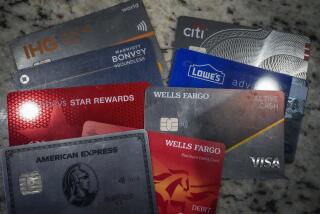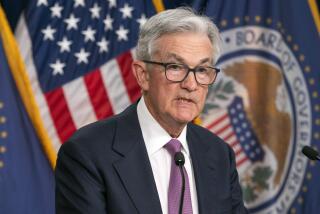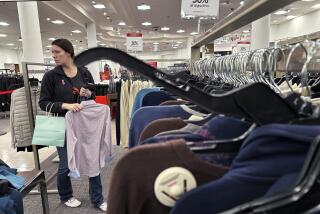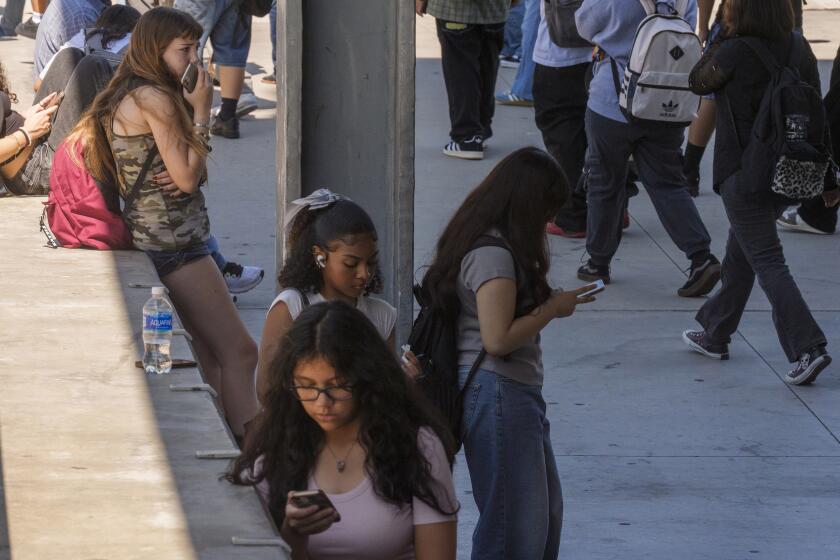Fed district chief foresees phaseout of stimulus by year’s end
The recent improvement in the labor market and other signs that the recovery is gaining speed have surprised economists, fueling speculation that the Federal Reserve will soon pull back from its massive monetary stimulus.
One of the Fed’s policymaking participants, John C. Williams, said in an interview with The Times that he can envision the central bank dialing back some of its bond purchases this summer before halting them entirely by the end of the year.
Williams, president of the Federal Reserve Bank of San Francisco, is a self-described centrist on a panel of 19 Fed officials who meet regularly to discuss the economy and policy options.
Noting the nation’s still naggingly high unemployment rate, Williams said Tuesday that he remains a “very strong supporter” of the Fed’s current stance of buying $85 billion of Treasury and mortgage-backed securities monthly. The purchases are aimed at lowering long-term interest rates on mortgages and other loans to spur spending and investment.
The Fed has cited the stimulus benefits especially to the automobile and housing markets, and said it would maintain the bond purchases until the outlook for the job market improved “substantially.” It did not define substantial.
The central bank also has pledged to keep its benchmark short-term interest rate near zero as long as the jobless rate is above 6.5% and inflation prospects remain near the Fed’s 2% target.
But the Fed’s easy-money policies have generated controversy as some of Williams’ colleagues and outside experts have expressed concerns that the actions are leading to excessive risk-taking and could result in financial instability and higher inflation.
In the view of critics, those risks outweigh the increasingly limited benefits of the stimulus.
Fed Chairman Ben S. Bernanke has said the costs are “manageable,” and Williams agreed that apart from some isolated cases of overheating, such as in junk bond and crop-land markets, “you really don’t see signs of high risk-taking or high leverage.”
“In fact,” he said, “we’re still in basically a risk-averse environment in most of our financial and banking institutions. And second, we don’t see a big increase in leverage.”
That said, Williams has become more confident about economic growth in recent weeks. Consumer spending, business investment and the housing market all have strengthened to a point where Williams believes that the economy may be entering a period of sustained growth after more than 3½ years of moving in fits and starts.
“We are seeing pretty solid signs of gaining momentum,” said Williams, 50, a Sacramento native who has a doctorate in economics from Stanford. “It is striking that given all the uncertainty in Washington and all the events in Europe that the private side of the U.S. economy is much stronger.”
Williams also acknowledged that the labor market has shown good progress as the economy has added an average of 205,000 jobs a month in the last four months. Analysts are expecting close to that level of job growth for March when the government report on new jobs is released Friday.
Even so, Williams said he would like to see some more months of job growth of about 200,000 before advocating for a pullback on stimulus.
“We’ve been fooled before,” he said of past bursts of job growth that fizzled.
Moreover, Williams noted, the effects of the federal government spending cuts under the so-called sequestration have yet to play out.
Still, he also expects monthly job growth to approach 200,000 in the summer, at which point he reckons the Fed will begin to taper off the bond purchases.
Williams is less confident, however, about how quickly the jobless rate will drop.
Like most of his Fed colleagues, Williams expects the rate to dip below 7% by the end of 2014, from 7.7% currently, but that will depend on how many people who have dropped out of the labor force return to the job market.
Williams, who became the San Francisco Fed bank chief in 2011 after his predecessor, Janet Yellen, was named vice chairman of the Fed, will speak about the economy at a town hall event Wednesday in Los Angeles.
He is one of 12 district bank presidents in the Federal Reserve system. Four of them serve on a rotating basis on the Fed’s monetary policy committee, along with seven Fed governors and the New York Fed bank chief. Williams is not a voting member this year.
More to Read
Inside the business of entertainment
The Wide Shot brings you news, analysis and insights on everything from streaming wars to production — and what it all means for the future.
You may occasionally receive promotional content from the Los Angeles Times.











